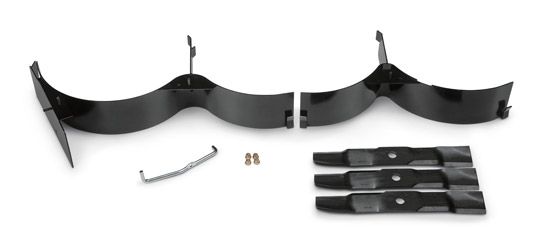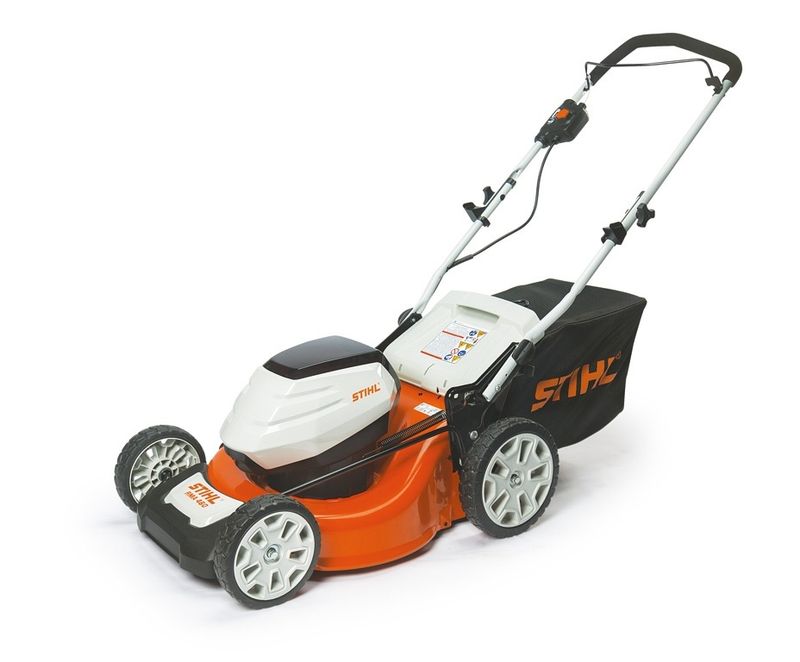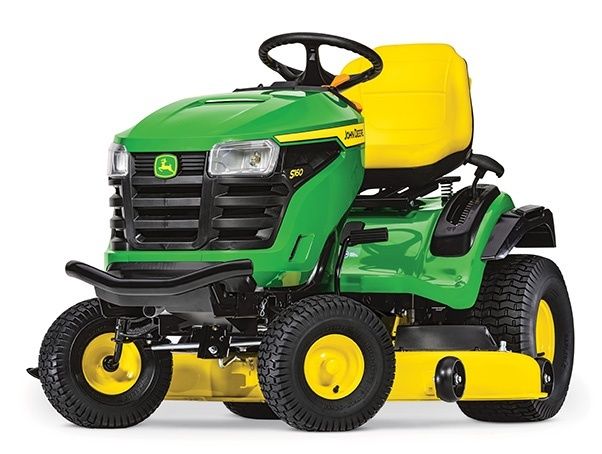
When to mulch or bag lawn clippings
Are you mowing, watering, and fertilizing your lawn at the same time? Believe it or not, you may already be doing it. Grass blades are composed of about 85% water, with other organic matter and nutrients, like nitrogen, phosphorus, and potassium, making up the rest. If you leave clippings on the yard after mowing, you've fed and watered it with no extra work required.
Leaving the clippings in the yard is almost always best, but in some situations, you may choose to bag them. We'll go over the pros and cons of each and let you decide.
Leaving the clippings (mulching & discharging)
All mowers are capable of discharging and will have a chute on the side or back for grass clippings to exit. The difference in mulching and discharging is in the chute (and blades). If you have a mulching kit to plug the chute, the cut grass blades will recirculate inside the deck, allowing them to be cut into finer pieces. They will eventually make their way back down into your lawn.
Mulching pros and cons
Pros
- Healthy for your lawn - clippings are returned to the lawn, providing nutrients and helping the soil retain moisture. This is sometimes referred to as "grasscycling." Despite popular belief, leaving clippings in the yard won't contribute to thatch.
- Less work - raking, bagging, and handling the clippings can take a lot of time and effort. Letting the lawn naturally decompose clippings is much easier.
- Better appearance - discharging will leave larger clippings in the yard, so mulching them into finer pieces will make the yard look cleaner. Keeping the clippings circulating under the deck will also prevent them from ending up on the road or walkways.
- Legal - that's right, you won't get in trouble with the law if you're leaving your clippings in the yard. Dumping yard waste is banned in some states, and leaving yard clippings all over the road can get you in trouble with some local authorities. You can do some research on laws that might affect you or just mulch and play it safe.
Cons
- Harder on your mower - if you try to mulch when the yard is tall, your mower is working harder to chop up the clippings.
- Doesn't work well for wet grass - when the grass is wet, you may run into some issues when trying to mulch. The grass clumps together and sticks to the underside of the deck, causing circulation issues and leaving small piles of grass all over the yard.

Mulching equipment
Most mowers should be capable of mulching. With a push mower, it's as simple as covering the discharge chute. If you're looking for a riding mower to mulch with, consider the John Deere MulchControl Kit. It allows the discharge chute to be opened or closed with ease. This kit is available for mowers with High-Capacity, Accel Deep, and Edge Cutting System decks. These decks can be found on the John Deere 100 Series, S240 Series, X300 Series, X500 Series, X700 Series, Z300 Series, and Z500 Series mowers. The one-touch option for the MulchControl kit (allowing it to be switched on/off from the seat) can be found on John Deere X300 and X500 Select Series lawn tractors.
If you're looking for a walk-behind mower, all STIHL battery mowers are capable of mulching.
We recommend using a set of mulching blades to help with circulation and cutting. These blades should be kept sharp so the mower doesn't have to work too hard. For tips on sharpening blades, check out our guide on sharpening vs buying blades.
When to bag yard clippings
Mulching is great, but it's not a one-size-fits-all solution. You may decide to bag clippings for a variety of reasons. The most common is when the yard is several inches tall and clippings cover the lawn, preventing nutrients from reaching the grass below. Around fall when leaves start to cover your lawn, having a bagger around will save some time raking. If you notice signs of disease, you may want to collect the clippings to prevent it from spreading. You could also have a compost pile for clippings.
Be sure to check local and state laws if you decide to bag and dispose of clippings.
Bagging equipment
Bagging yard clippings or leaves with a rake can take a while. You can save time and effort by using a material collection system (MCS). Material collection systems are available for John Deere 100 Series, S240 Series, X300 Series, X500 Series, X700 Series, Z300 Series, and Z500 Series mowers. All STIHL battery mowers come with a bag attachment. Any blades should work when bagging, but if you want finer pieces, you should use a mulching blade.
Most of the time, mulching your clippings is the best option. You should bag your clippings if the grass is tall, leaves are covering the lawn, or you need to prevent disease and weeds from spreading.
Whether you're mulching or bagging, Hutson has the right tools for the job. If you need help finding the right equipment, give us a call or visit one of our stores.


